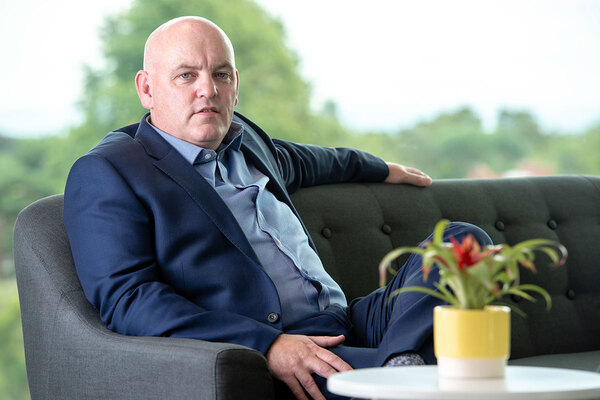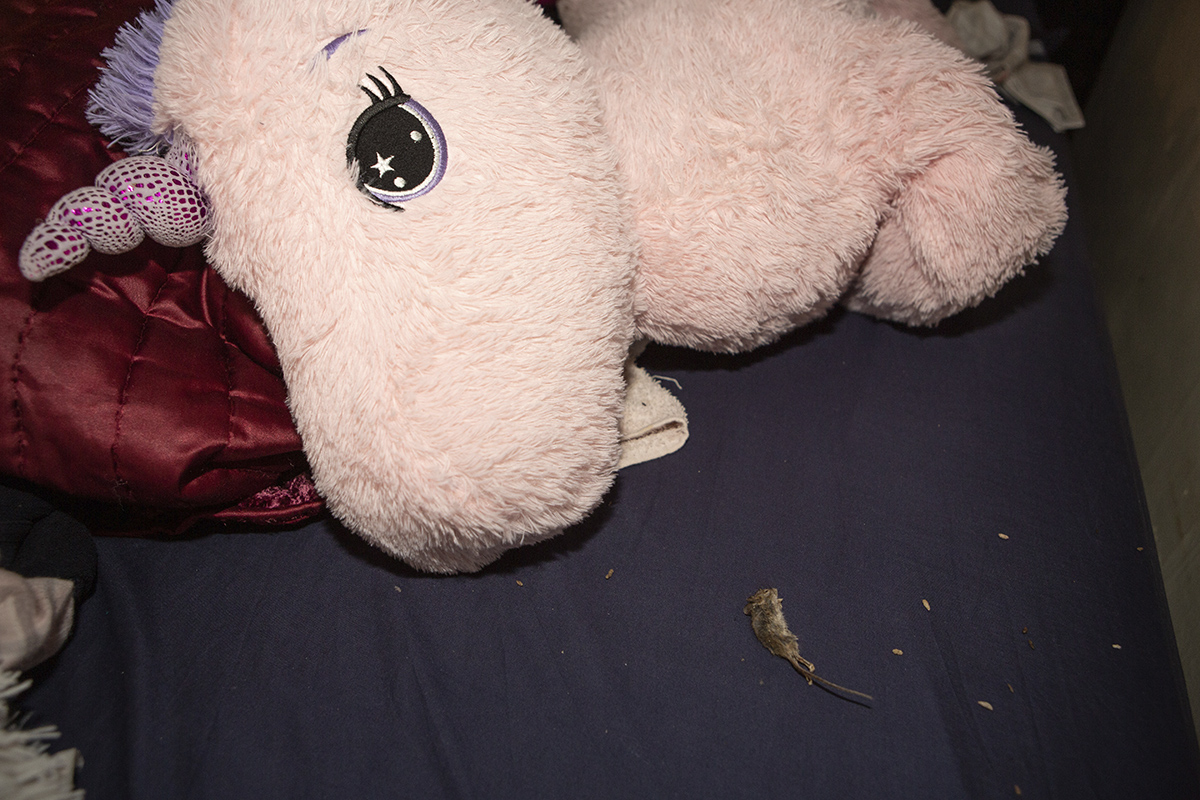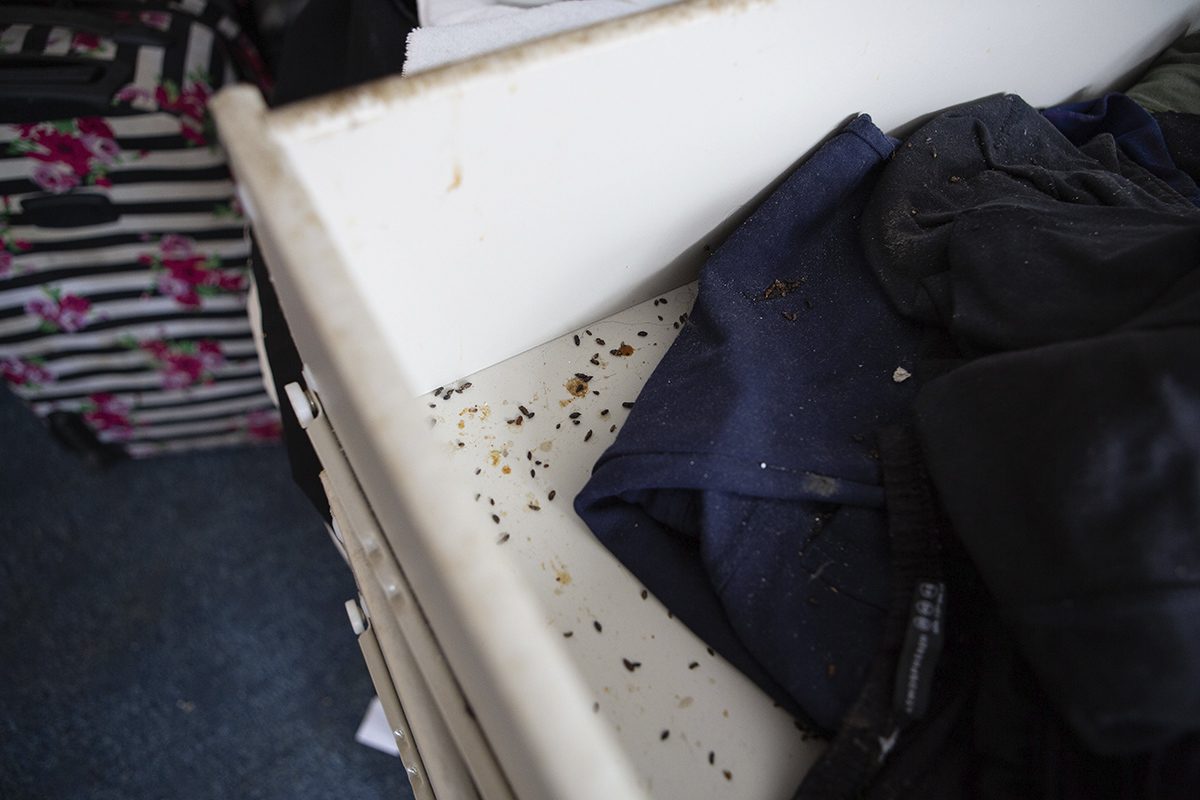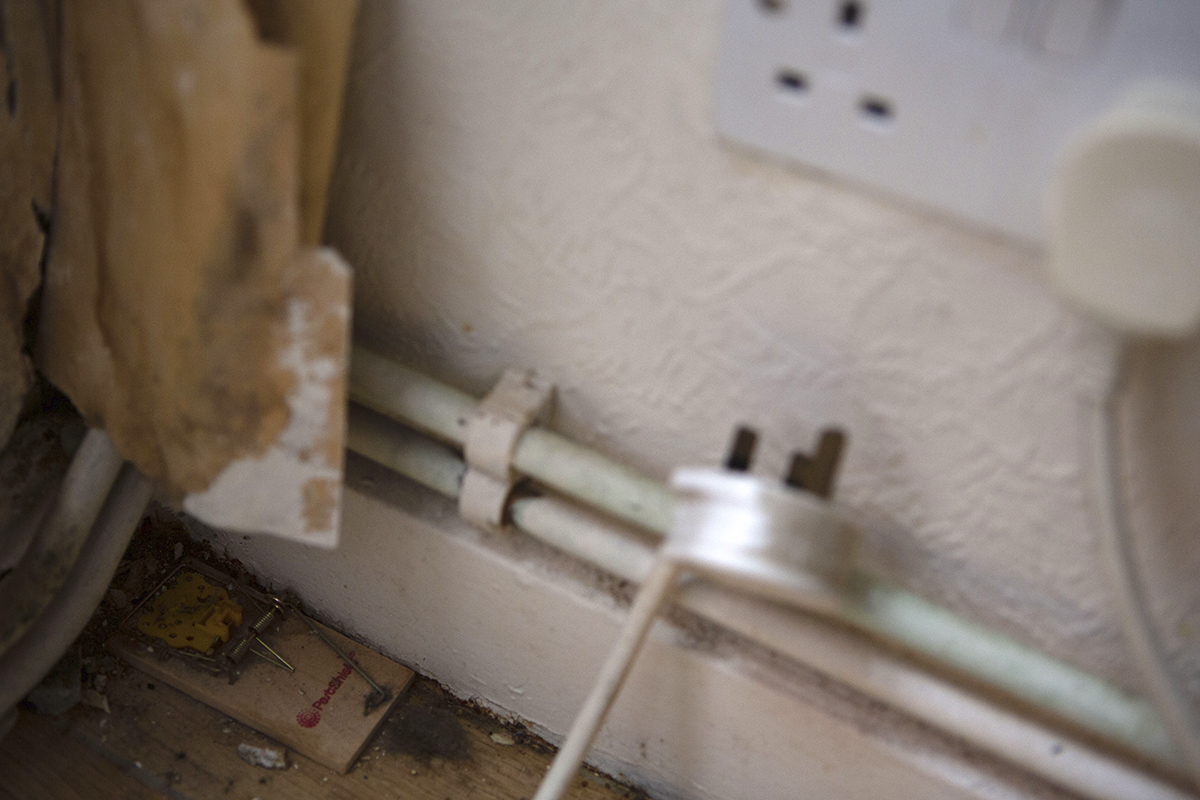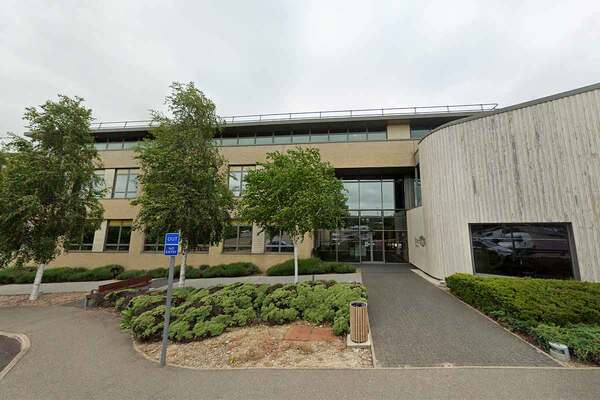You are viewing 1 of your 1 free articles
How to fix social housing’s repair problem
Social landlords’ reputations have come under the microscope after reports of disrepair. Nathaniel Barker digs deeper into the issue. Photography by Tim Foster

As she stands and looks around her housing association flat, Louise Plunkett begins to cry. Mouse and rat droppings litter every surface. The air is rank with the stench of vermin. She has put all her belongings in bags and boxes to try to protect them, but in vain; the pests have been through everything.
“I just can’t take it anymore,” she repeats through sobs, her voice muffled by a respiratory mask she wears when in the flat because of breathing problems that started around two months ago, shortly after which she was moved into temporary accommodation, where she is now living.
Ms Plunkett is yet another social housing tenant who has turned to the media over unacceptable conditions in her home. In recent months, ITV News has run a series of reports about residents’ stories of disrepair and feeling ignored. It has proved uncomfortable viewing for social landlords and is doubtless a big threat to the sector’s reputation.
“I think, as a sector, we have got quite a lot to do”
Some crucial questions need to be answered. Just how widespread are cases like these? Are they becoming more common, or just more visible? And – more importantly – why do things go so badly wrong?
Kate Henderson, chief executive of the National Housing Federation (NHF), appeared on ITV News in June to apologise on behalf of associations for the conditions uncovered.
But as she said then, and tells Inside Housing now, while the stories are “just not acceptable”, she does not believe they represent “the norm” in the sector. “There is undoubtedly a lot of scrutiny on the sector, which is a good thing,” she says. “I do think that, overall, housing association homes are of better quality than other types of homes.” She also argues that the standard of social homes is improving.
In some respects, the data supports Ms Henderson’s claim. According to the English Housing Survey (EHS), the proportion of homes considered ‘non-decent’ in the social housing sector is 12.3%, compared with 16.3% of owner-occupied homes and 23.3% of private rented homes. It should be remembered, though, that the Decent Homes Standard was developed to apply specifically to social housing, with £22bn of government money spent bringing stock up to scratch between 2000 and 2010. Even if the vast majority of social housing is high quality, that does not mean the sector has no cause for concern. Poor housing conditions do not have to be commonplace to be too frequent.
“Choosing to prioritise investment in existing stock would have meant a better service for existing customers, but been catastrophic for the thousands most desperately in need of a home who would have missed out as a result”
Housing secretary Robert Jenrick, dismissed the issues as “a lack of compassion and poor management in a small number of councils and housing associations” when interviewed by ITV.
But the four associations covered in the broadcasts – Clarion, L&Q, The Guinness Partnership and Bromford – are by no means fringe players, owning about one in 12 social homes in England between them.
“It is not a tiny minority in the way that Jenrick wanted to paint it,” says Rob Gershon, a council housing tenant and prominent campaigner. “My feeling is there are some really bad social landlords and some really good ones, then everybody else is sort of in the middle.”
“I think, as a sector, we have got quite a lot to do,” admits Eamon McGoldrick, managing director of the National Federation of ALMOs.
Both Mr Gershon and Mr McGoldrick reference easy access to social media as a means through which poor housing conditions are becoming more visible. And it is certainly true that since the Grenfell Tower fire, there has been a greater focus on such stories – particularly where residents feel they have not been listened to.
David Orr, a former NHF chief executive and current chair of Clarion’s housing association board, was asked if he feels ITV’s reporting speaks to a genuine growing problem in the sector or whether the issues are simply getting more airtime. He replies: “Truthfully, I think it’s a bit of both. We know that social housing is the best quality of the three tenures, but I do think there is a criticism that we have to have a better working relationship with tenants. It’s very disappointing that it has been possible to find those issues in social housing and there is much to be learned [to ensure] that the sector delivers to residents.” Clarion has committed to publishing a ‘lessons learned’ report following the ITV coverage.
Some data indicates failings by social landlords are becoming more common. The Regulator of Social Housing (RSH) found 15 ‘serious detriment’ cases in 2019/20 (see graph above) – by far the most in a year since the existing regime began in 2012/13, with a growing proportion of consumer referrals leading to investigations. In 2015/16, the maladministration rate among cases probed by the Housing Ombudsman was 25%. Last year, it was 49%.
EHS data shows that 65.7% of social housing tenants report being satisfied with the way their landlord carries out repairs and maintenance. Worryingly, this is significantly lower than in the private rented sector where the figure is 74.4% (see graph, below). It follows a slight decline among social tenants, driven by an unmissable drop among housing associations.
Myriad factors at play
So what are the factors at play behind these trends?
Many of the residents visited by ITV were plagued by damp and mould – including Ms Plunkett, whose bathroom ceiling has turned indigo because of it.
Damp is an issue as old as housing itself. While the percentage of social homes in England with the problem fell from 9.9% to 4.5% between 2009 and 2019, progress slowed considerably after 2011. Part of that is a consequence of the age of the country’s social housing stock. As Ms Henderson puts it: “Some of the structural issues are because those buildings are often post-war buildings built cheaply in the 1950s and ’60s, which are coming to the end of their lifetimes.”
These are buildings that have received limited investment in their upkeep over the decades. Decent Homes may have been worth tens of billions, but the money went into new bathrooms and kitchens, not structural work to inhibit damp and other repairs.
Then there are household factors. Most damp issues are caused by condensation – a fact that can sometimes lead to residents being blamed. But, as Ms Henderson points out, while condensation may be outside a landlord’s control, equally it is usually not the tenant’s fault. Overcrowding in social housing is at record levels, with large families often packed into two-bedroom flats. Under such conditions, mould is virtually inevitable, particularly during lockdowns and in the context of extensive fuel poverty.
That is an issue of social rented housing supply. “What we need is more affordable family-sized social homes,” says Ms Henderson. “Without those, it’s really hard to move people out of overcrowded housing.”
Her predecessor, Mr Orr, points the finger squarely at government. “This is a problem that was made substantially worse by the decision in 2010 to ban the use of government money for building social rent – and that is something the corporate memory has forgotten.”
Other government policies may have even more direct relevance. A line can and should be drawn from the announcement in 2015 that social housing rents would fall by 1% annually for four years – with landlords told to “find efficiencies” – and today’s problems.
For several years, Inside Housing has tracked housing association spending on repairs and maintenance. In 2016/17, the start of the rent cut, spending on major repairs among the organisations surveyed fell by £59m (see graph above). The figure had still not returned to pre-cut levels by the time of the most recent survey four years later. In fact, it dipped again among large London landlords in 2018/19.
Overall, at least £142m was wiped from major repairs spending during the four years compared to if it had held steady. Note that these figures do not include capitalised repairs – a different way of accounting for the spending used by some landlords – which means the true totals are much higher, at around £1.7bn in 2019-20.
“Of course there were consequences to the rent cut,” says Mr Orr. “It drove cuts in spending on repairs and maintenance and community facilities. Did it affect the quality of the supply and the service? Yes, probably.”
Despite the rent cut, development activity increased dramatically between 2015 and 2020, with social landlords channelling their resources into new supply.
“We were under a lot of pressure to build new homes, and choosing to prioritise investment in existing stock would have meant a better service for existing customers, but been catastrophic for the thousands most desperately in need of a home who would have missed out as a result,” says Mr Orr.
No social landlord embraced the development-focused agenda more enthusiastically than L&Q, the giant London-based association. In 2017, it announced plans to build 100,000 homes over 10 years.
L&Q was among the landlords to come under ITV’s spotlight over the particularly distressing case of Junior Jimoh, a man with a neuromuscular disease who breathes with the help of a ventilator. Images showed his flat camouflaged with mould.
Gerri Scott, L&Q’s group director of customer service, tells Inside Housing that it was a “shameful episode”. Amid “quite a lot of soul searching internally about what the case told us”, L&Q recently unveiled a programme to spend £1.9bn on its existing homes over the next seven years – the largest investment of its kind in the history of social housing – partly in a bid to fix legacy issues such as damp. It follows a strategic shift placing more emphasis on current stock; the huge aforementioned development target was slashed by 70% in April.
Ms Scott resists the temptation to blame ministers and the rent cut. “Of course it’s constrained finances, but I think, as an organisation, we have made choices about where we should take our finances and where we should put them.”
“Often, staff won’t have the time or the incentive because they’re being measured on how quick they are”
“We can’t blame government for all of it,” concedes Mr McGoldrick. “With day-to-day housing management issues, you are always on sticky ground trying to blame government.”
Choices social landlords have made when designing their processes also play an important role.
“It all relates back to residents being heard,” says Chris Seeley, director at Ark Consultancy, which produced a damning report on Croydon Council’s housing service after ITV exposed shocking conditions faced by two of its tenants.
He emphasises the value of staff speaking to tenants and looking around for other jobs when entering someone’s home for a repair. “Often, staff won’t have the time or the incentive to do that because they’re being measured on how quick they are. It’s sometimes a case of be careful what you wish for with certain key performance indicators like ‘right first time’. There is a danger that we hit the target but miss the point.”
A failing by a landlord has two main components: the substantive issue (such as mould) and the inability of the complaints process to resolve it effectively.
Richard Blakeway, the housing ombudsman, spots a pattern. “I think, for larger landlords, they’ll be very process-driven in their complaint-handling,” he says. “And if you fall outside that process in some way, then you can see that failure manifested throughout, and individual circumstances which you have to take into account if you’re going to get an effective resolution are getting lost.
“And then on the other end of the scale, I suppose you have systems that are perhaps sort of process-inefficient, because they’re not dealing with the same volume and you’ve got people who might be doing multiple roles or having multiple pressures, and that’s leaving things to get lost.”
Those processes, Mr Blakeway adds, are coming under increasing strain.
The world of building management is becoming more complex, with freeholders, managing agents and an ever-expanding patchwork of contractors. “With those complex relationships, often when we’re finding maladministration, that relationship isn’t necessarily working,” he says.
“That’s something we’re starting to really see through our casework and needs to be addressed, because it means that residents aren’t necessarily getting the service they should expect.”
Sometimes the contracts holding these intricate relationships together can be “really weak”, he notes.
For example, a recent ombudsman report on heating complaints highlighted a case where a communal boiler was breaking down repeatedly, but there was no penalty clause embedded in the 20-year contract with the supplier.
Listening to residents
Many social landlords have moved to a call centre model of housing management over recent years. One former Grenfell Tower resident, Betty Kasote, told the public inquiry into the fire that the repairs service got worse after the estate office was replaced with a central complaints hotline.
Ark’s Mr Seeley observes that the theme of listening to residents applies here as well. “It’s possible to go through a whole script without addressing the well-being of a tenant,” he says.
L&Q, Ms Scott says, now wants to go “back to that much more local housing management offer”, with traditional housing officers “to act as an advocate for residents and to be able to identify their issues and escalate them on their behalf and get things done”.
Her explanation for why the organisation moved away from the housing officer approach comes as little surprise. She points to two factors: that L&Q is “a very big, geographically dispersed landlord” and that it seeks to “as far as possible enable people to do things themselves digitally”.
This ties into a very common criticism of the sector: that housing associations have become too large, too commercial and too distant from their communities. It must be said that in extensive analysis of Housing Ombudsman data, Inside Housing could find no correlation between those consistently letting residents down and size. Some small community-based landlords were among the worst offenders.
But, for Mr Gershon, these things speak to an organisation’s priorities. “For me, people just not being listened to is a culture issue,” he says. “A lot of the sector has a long way to go on that. If you get the culture right, you don’t get people going to ITV.”
Those priorities – and the resulting organisational culture, and the impact on residents, in turn – are determined by the board, he argues.
Which brings us to regulation. All the choices discussed here were made by social landlords within the context of a regulatory environment described by Mr Gershon as “essentially a gentleman’s agreement”. It is difficult not to feel that if an effective regime for consumer regulation were in place, tenants would not end up on the evening news.
“The danger here is to assume the sector is rotten. It is absolutely not rotten”
We are back full circle to government decisions –in this case, to scrap proactive consumer regulation, beginning with the abolition of the Tenant Services Authority in 2012 – a decision effectively reversed by the Social Housing White Paper published last October.
“It was inevitable with the watering-down of regulation, the imbalanced shift to only proactive economic regulation, and various policies that reduce funding for genuinely affordable housing, that standards of some landlords would slip and investment in existing stock could reduce due to the heavy emphasis on generating new supply from reduced capital funding,” summarises Darren Hartley, chief executive of TAROE Trust, the tenants’ charity. “The white paper – when and if delivered – will go some way to mitigating this position. However, significant time over the past decade has been lost, and it will take several more years to implement stronger systems.”
Take ageing housing stock, put it under huge strain, prioritise development and digitalisation, reduce the income flowing in amid limited regulatory oversight, and you end up with problems – some of the government’s making, some less so. That is without even touching on those ever-lurking insidious issues of social housing stigma and racism.
Mr Orr makes a firm final point. “The danger here is to assume the sector is rotten. It is absolutely not rotten. The fact is there is an obligation on social housing providers to be very good at what they do.”
This obligation arises from the importance of what social landlords exist to provide: a home. Little is more important than that.
Louise Plunkett’s story
“I have to wear this when I go in there,” Ms Plunkett explains, as she dons a respiratory mask at the front door outside her flat. “It affects my breathing.” The acrid air hits as soon as you step inside.
The Clarion Housing Group flat is only a short walk from the same landlord’s Eastfields Estate in Mitcham, south London, where severe vermin and disrepair issues were previously highlighted by ITV.
Ms Plunkett’s problems began in 2013, with water supply failures, leaks, and damp and mould. Evidence of leaks and mould are still clear in the flat, especially in the bathroom where the ceiling is covered.
In 2019, mice and rats started to move in. A surveyor was sent out and identified a hole in rotten wood around the patio door as the issue. That hole is still there.
As time went on, the infestation got worse. Ms Plunkett – a supported living co-ordinator – describes waking up and finding fresh faeces on her bedclothes on multiple occasions, prompting her to start sleeping on the sofa while she was working long days during the height of the COVID-19 pandemic. Once, she says, there was a dead mouse under her pillow.
“Ms Plunkett’s case is a high priority for us and we have been liaising with the ombudsman, who has withdrawn the Complaint Handling Failure Order against Clarion”
Correspondence between the Housing Ombudsman and Clarion appears to show a merry-go-round of confusion. The housing association closed her case erroneously in February 2020. A year later, the ombudsman issued a Complaint Handling Failure Order over Ms Plunkett’s case, but withdrew it a fortnight later after Clarion appealed despite both parties having acknowledged failings.
In July, the ombudsman threatened Clarion with another failure order after it missed a deadline to provide information on the case. An investigation into Ms Plunkett’s complaint is now ongoing and the ombudsman has apologised to her for the errors.
Ms Plunkett was moved into emergency B&B accommodation in July as her breathing problems worsened, and she remains there at the time of writing. She and Clarion began discussing a temporary move in March but struggled to agree terms.
Now, most of her possessions have been destroyed by the vermin. Her poor health has left her feeling unable to work. She rejected an offer of £2,457.97 in compensation from Clarion, saying it does not come close to covering her losses.
“Clarion apologised for the service provided to Ms Plunkett up until February 2021. We recognised past mistakes, provided financial compensation and began the process of offering our resident a move-in order for us to conduct the necessary repairs work,” a spokesperson says. “Ms Plunkett’s case is a high priority for us and we have been liaising with the ombudsman, who has withdrawn the Complaint Handling Failure Order against Clarion.”
Sign up for our daily newsletter
Already have an account? Click here to manage your newsletters


